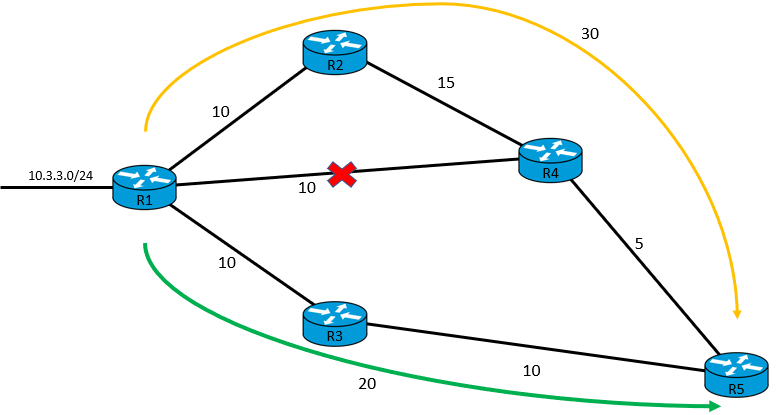One of the main features of EIGRP is its reliable failure detection and swift convergence mechanism. The EIGRP Hello packet makes these possible, ensuring all EIGRP neighbors are up and running. We can configure EIGRP timers such as the Hello packets sent out depending on the Hello timer, which is by default sent every 5 seconds, but the EIGRP Hello interval is longer for slower speed interfaces such as T1 or frame relay interface at 60 seconds.
One of the essential EIGRP timer settings is the hold time, which is the quantity of time EIGRP shall consider a link as reachable and functioning. The default hold timer value is thrice the amount of the hello interval. Therefore, considering the default router EIGRP hold timer is at 15 seconds because the default hello timer is 5 seconds. For slow-speed interfaces like frame relay, the hold timer is 180 seconds.
The hold time decrements. Once the hello packet is received, it immediately resets the timer. However, if the hold timer runs down to 0, EIGRP considers the link unreachable and informs DUAL of a topology change.
EIGRP Convergence
Whenever link failure occurs, the interface changes its state to down, and all the other interfaces connected will also go down. So when this failure happens, the EIGRP neighbor relationship also moves to a down state, and path recomputation is immediately done to any prefix where the EIGRP neighbor was considered a successor.
Once EIGRP detects that the link failed, the feasible successor immediately becomes the successor route acting as a backup route. The router then advertises an update packet for that path, considering the new EIGRP path metrics. Routers on the downstream run their own DUAL for any affected prefixes to check concerning the new EIGRP metrics.
A successor route or feasible successor route can be changed once a new EIGRP metric has been advertised from a new successor route in the prefix. For example, the topology below shows the recalculation of a new successor route if the link between R1 and R4 fails.

Since the successor route via R1>R4>R5 is down, R4 shall update its EIGRP metrics considering the feasible successor route via R1>R2>R4>R5 with an RD of 30. Once the updated metrics have been provided to R5, it will then compare the best RD between the new routes it received and consider R1-R3-R5 as the new successor route to establish neighbor relationships.
Query Process and New EIGRP Route Calculation
There are times that a feasible successor is not present for a prefix. DUAL will then perform a new route calculation, changing the route state from passive (P) to active (A) in the IP EIGRP topology table.
Once the router detects a change in topology, it then sends out query packets to EIGRP neighbors for the route. The query in the EIGRP packets consists of the network prefix having the delay set to infinity, so the routers in the prefix know that it has gone active. Once the EIGRP query packets are sent, the reply status flag is set for all the neighbors on a prefix basis.
Once the query packet has been received, the EIGRP router does one of the following:
- It might reply to the query that the router does not have a route in its routing table to the prefix.
- If the query does not arrive from the successor for that route, it detects the infinite delay but ignores it since it did not originate from the successor. The receiving router sends the EIGRP attributes for that route.
- If the query is from the route’s successor, the receiving router notices the infinity delay, sets the prefix as active in the EIGRP topology, and forwards a query packet to all downstream EIGRP neighbors for that route.
This EIGRP routing process of query continues to all the neighboring routers until the neighboring router establishes the query boundary. Query boundary is reached when a router does not tag the prefix as active, meaning it responds to query as;
- It advertises that it does not have a route to the prefix.
- It replies with an EIGRP attribute because the successor did not send the query.
Once the router receives a reply for all the downstream queries sent out, meaning DUAL is complete and updates the route to passive, it then sends a reply packet to any upstream routers that forwarded a query packet to it. When the reply packet for the prefix is received, the reply packet is marked for that neighbor and prefix. The reply process continues upwards for the queries until the first router’s queries are received.
Download our Free CCNA Study Guide PDF for complete notes on all the CCNA 200-301 exam topics in one book.
We recommend the Cisco CCNA Gold Bootcamp as your main CCNA training course. It’s the highest rated Cisco course online with an average rating of 4.8 from over 30,000 public reviews and is the gold standard in CCNA training:
